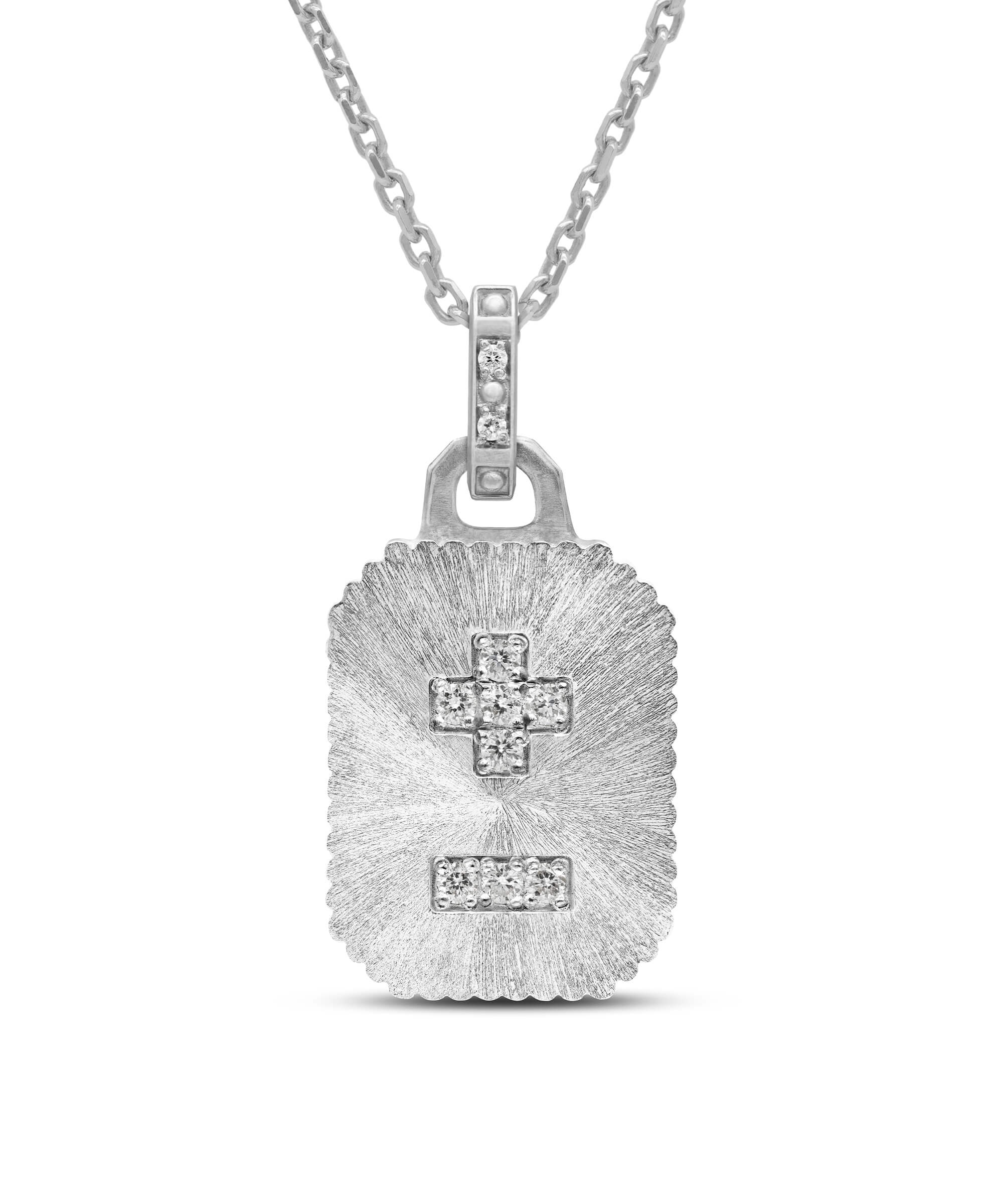The compass has long been a symbol of direction, guidance, and exploration, deeply rooted in human history and culture. Originally used for geomancy and navigation in ancient China, the compass evolved to become an essential tool for explorers and traders across the world. Beyond its practical use, the compass symbolizes the search for purpose and truth, representing the ability to stay on course amidst life's uncertainties. This text delves into the symbolism of the compass, exploring its role in various cultural traditions, literature, and modern-day jewelry. Whether guiding physical journeys or serving as a metaphor for personal growth and inner direction, the compass remains a powerful symbol of adventure, focus, and self-discovery.
Amuletha™ Book of Symbols
Compass Symbol
*A Compass of the Winds" by Tove Jansson
A Compass of the Winds" by Tove Jansson is a mural created in 1954 for the Helsinki City Hall. The artwork depicts a circular compass surrounded by the four winds, each represented by stylized figures that symbolize the cardinal directions. Jansson's signature whimsical style is evident in the dynamic movement of the wind characters and the intricate, decorative details. The mural's vibrant color palette and flowing forms evoke a sense of navigation and adventure, reflecting both literal and metaphorical journeys. It is a fine example of Jansson's ability to blend fantasy and realism in public art.

*A Compass of the Winds" by Tove Jansson
A Compass of the Winds" by Tove Jansson is a mural created in 1954 for the Helsinki City Hall. The artwork depicts a circular compass surrounded by the four winds, each represented by stylized figures that symbolize the cardinal directions. Jansson's signature whimsical style is evident in the dynamic movement of the wind characters and the intricate, decorative details. The mural's vibrant color palette and flowing forms evoke a sense of navigation and adventure, reflecting both literal and metaphorical journeys. It is a fine example of Jansson's ability to blend fantasy and realism in public art.
COMPASS SYMBOL ORIGIN
The compass symbol has ancient roots, closely tied to humanity's exploration of the world and search for direction. The first known use of the compass as a navigational tool dates back to China during the Han Dynasty (circa 206 BCE–220 CE), where it was originally used for geomancy and divination. The Chinese soon realized its potential for navigation, and by the 11th century, it had spread to Europe and the Islamic world, becoming an indispensable tool for explorers and traders alike.
Throughout history, the compass symbol evolved to represent much more than literal direction. In medieval maps, the compass rose—showing the cardinal directions—was a key feature that symbolized order and understanding in a chaotic world. The compass became a metaphor for finding one’s way, both physically and spiritually. During the Age of Exploration in the 15th and 16th centuries, as sailors ventured into unknown waters, the compass became an emblem of discovery, guiding them toward new lands and opportunities.
Over time, the compass took on symbolic meaning in various cultures. In Western traditions, it often represents guidance, focus, and the pursuit of truth. In more spiritual or philosophical contexts, the compass signifies inner guidance, reminding individuals to stay true to their course, both morally and spiritually. Its connection to navigation, exploration, and personal growth has made the compass a lasting symbol of direction, purpose, and adventure.
What does COMPASS symbolize
The Compass symbol holds profound significance across various cultures and eras. These four are the most recognized:
Guidance
The compass symbolizes finding direction, helping one stay on course both physically and metaphorically.
Exploration
It represents the spirit of adventure and the desire to discover new places, ideas, and experiences.
Focus
The compass signifies focus and staying true to a path, even when faced with challenges or distractions.
Personal Growth
It symbolizes self-discovery and personal development, guiding individuals toward their true purpose in life.
Cultural mention
The compass symbol has permeated many aspects of human culture, from ancient secret societies to modern entertainment and personal symbolism. It has been used not only as a tool for physical navigation but also as a powerful metaphor for finding direction in life, guiding moral decisions, and pursuing personal desires. Across various cultures, the compass continues to represent exploration, purpose, and the journey toward self-discovery.
The Compass in Freemasonry
In Freemasonry, the compass is one of the most important symbols, representing moral discipline and the pursuit of wisdom. Paired with the square, it symbolizes the balance between personal desires and moral conduct. The compass instructs members to "keep within bounds," urging them to live a life of restraint and reflection. Its circular shape represents the infinite pursuit of knowledge and the importance of self-improvement, both central to Freemason philosophy. As Freemasons seek to "circumscribe" their passions, the compass serves as a reminder to guide one’s life with virtue and integrity, balancing personal ambitions with ethical responsibilities.
*Masonic square and compass
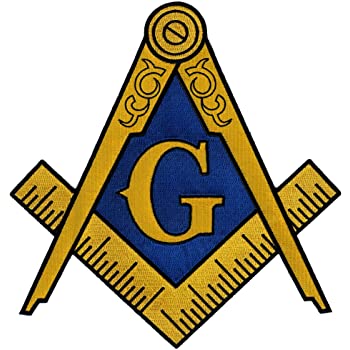
*Masonic square and compass
The Compass in Pirates of the Caribbean
In Pirates of the Caribbean, Captain Jack Sparrow’s enchanted compass adds a mystical layer to the traditional idea of direction and guidance. Unlike a typical compass, Jack’s points to whatever the holder desires most, symbolizing the deep connection between one’s internal desires and external path. The compass becomes a metaphor for pursuing personal goals, often leading Jack toward treasure or opportunities. However, it also highlights the uncertainty of direction in life, where desires can shift, and the path is not always clear. The compass in this context represents the quest for fulfillment and purpose, driven by individual passions rather than conventional bearings.
*Compass from movie “The Pirates of the Caribbean”
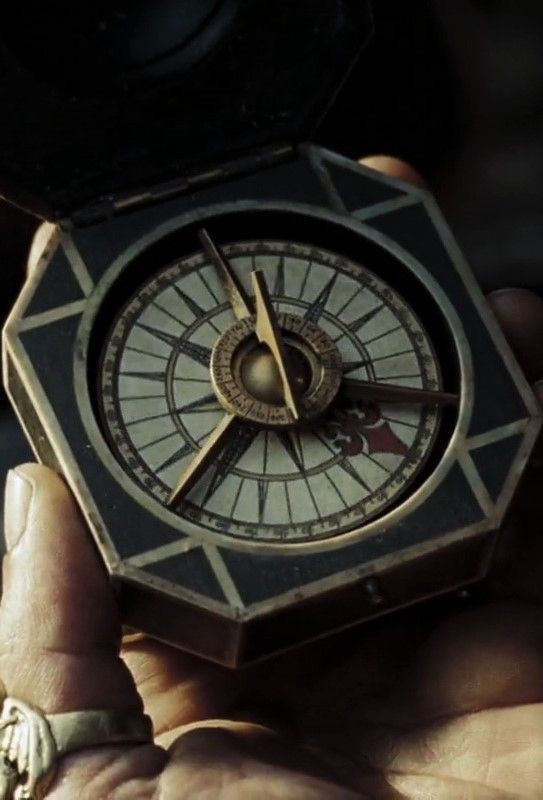
*Compass from movie “The Pirates of the Caribbean”
Compass in the flag of Portugal
The compass rose on the Portuguese flag is a significant symbol of the country’s rich maritime history and its role in the Age of Discovery. Positioned behind the shield on the national flag, the compass rose represents Portugal’s navigational prowess during the 15th and 16th centuries, when Portuguese explorers charted unknown territories and established global trade routes. This symbol underscores the nation's leadership in exploration, guiding ships across the Atlantic and beyond. The compass on the flag reflects Portugal's adventurous spirit, a reminder of its legacy as a global seafaring power that expanded the known world and forged lasting cultural and commercial links across continents.
*Illustration by Alfredo Roque Gameiro
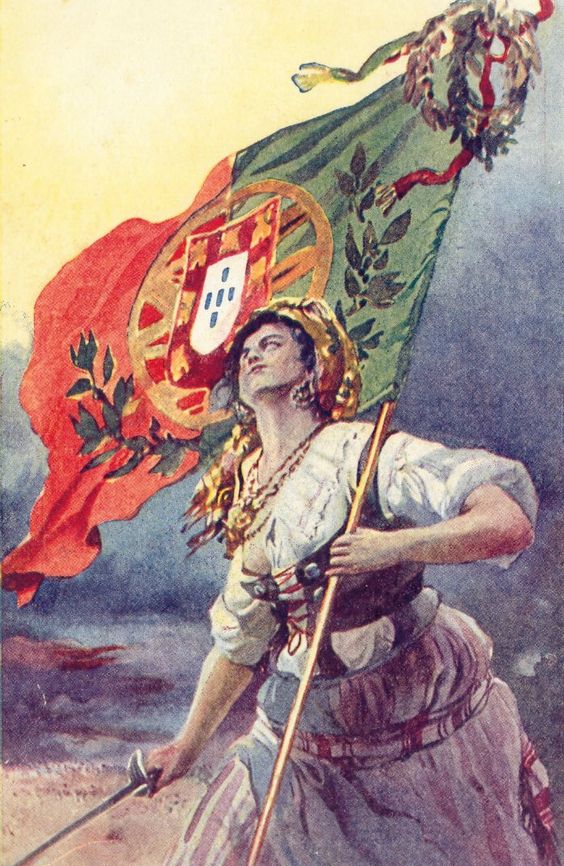
*Illustration by Alfredo Roque Gameiro
Compass symbol in the world of jewelry
The compass symbol is often worn by individuals who value exploration, adventure, and personal growth. It appeals to those who see life as a journey and are seeking direction, whether in a literal or metaphorical sense. Younger generations, particularly travelers, hikers, or those embarking on new life paths, are drawn to compass jewelry for its association with guidance and adventure. The compass also resonates with individuals looking for a reminder to stay focused and true to their personal goals, making it a popular choice for people seeking inspiration or motivation.Gifting compass jewelry carries deep symbolic meaning, often representing a wish for guidance, protection, and direction. It can symbolize a desire for the recipient to find their true path in life or stay steady during challenging times. For travelers or those beginning a new chapter, such as a graduation, new job, or relationship, a compass gift can be seen as a meaningful token of encouragement, symbolizing support for their journey ahead and the hope that they remain focused on their goals.
What does a COMPASS symbolize in literature?
The compass symbol has appeared in literature as a powerful metaphor for guidance, exploration, and the search for direction in life. In both poetry and prose, the compass represents a journey—whether physical, emotional, or spiritual—where the individual seeks their true path amidst uncertainty. Writers often use the compass to convey themes of self-discovery, adventure, and the pursuit of purpose. Below are some famous works where the compass takes on a symbolic role.
“Northern Lights” by Philip Pullman
In Philip Pullman’s Northern Lights (also known as The Golden Compass), the alethiometer, often referred to as the "golden compass," does not point north but instead reveals the truth. Lyra, the protagonist, uses it to navigate morally complex situations and uncover hidden truths. The alethiometer symbolizes the pursuit of knowledge and the moral compass, guiding Lyra not just physically but also ethically. It represents the idea of seeking answers and clarity in a confusing and often deceptive world, embodying the compass as a tool for truth and self-awareness.
First edition cover by David Scutt and Phillip Pullman
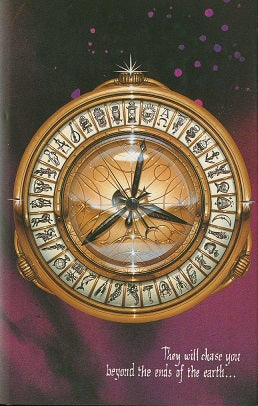
"A Valediction: Forbidding Mourning" by John Donne
Thy soul, the fixed foot, makes no show
To move, but doth, if the' other do.
And though it in the center sit,
Yet, when the other far doth roam,
It leans and hearkens after it,
And grows erect, as that comes home.
In this poem, Donne compares two lovers to the legs of a compass, symbolizing their connection even when they are apart. One foot stays grounded while the other moves, representing how love remains strong despite physical separation, always returning to its center.
"The Compass" by Robert Frost
All summer long I’ve been the man
Who wields the auger, steady hand,
I drill through life with patient skill
To find the heart of things at will.
Frost’s compass metaphor reflects persistence and precision in navigating life. The "steady hand" and "patient skill" represent the guidance needed to drill through the surface and uncover life’s deeper meanings, portraying the compass as a tool for discovery and purpose.
"The True North" by David Wagoner
The needle swings toward what it wants,
Even in storms, it holds its course,
Like hearts in love or minds in search
Of truth, unfaltering through their force.
Wagoner’s poem uses the compass as a metaphor for staying true to one’s goals and desires, even in the face of adversity. The compass needle becomes a symbol of unwavering direction, representing the pursuit of truth and love, no matter the challenges.
Thoughts
Thoughts placed alongside a symbol resonate with its meaning, serving as a guide to expand your understanding of the symbol's significance in relation to your personal experiences. AMULETHA™ also embraces this approach, invites a deeper contemplation of how symbolic meanings can reflect and enrich your life’s narrative, enhancing your appreciation of both the symbol and its broader implications.
Inner North Star - The compass represents an internal guide, helping one navigate both physical and metaphorical journeys with clarity.
Journey of Discovery - It embodies the adventurous spirit, encouraging the exploration of new horizons, ideas, and experiences in life.
Steadfast Pursuit - The compass reflects unwavering focus, helping one remain true to a chosen path despite obstacles and distractions.
Path to Self - Symbolizes the continuous journey of personal growth and self-discovery, directing individuals toward their deeper purpose.
FREQUENTLY ASKED QUESTIONS
How to fix a broken compass?
To fix a broken compass, first determine the issue. For a stuck needle, gently tap or clean it to remove debris. If the needle has lost magnetism, remagnetize it using a strong magnet. For air bubbles in a liquid compass, seal any leaks or refill with the appropriate liquid. Ensure no magnetic interference is present if readings are off, and recalibrate if necessary. If the glass or casing is broken, consider replacing those parts or the compass itself.
Can a compass work indoors?
Yes, but nearby metal, electrical devices, or large structures may interfere with its accuracy. Outdoor readings are generally more reliable.
Why does my compass point to the magnetic north, not true north?
Compasses are designed to align with the Earth's magnetic field, which points to magnetic north, not the geographic North Pole (true north).
Can weather conditions affect compass accuracy?
Weather conditions like rain or snow won’t affect a compass, but extreme temperatures might cause bubbles in liquid-filled compasses. However, this doesn’t impact the reading significantly.













